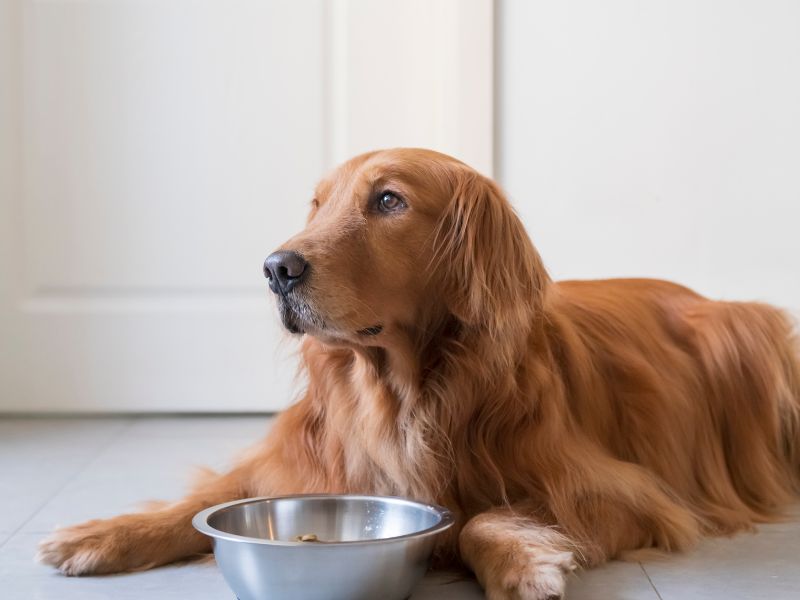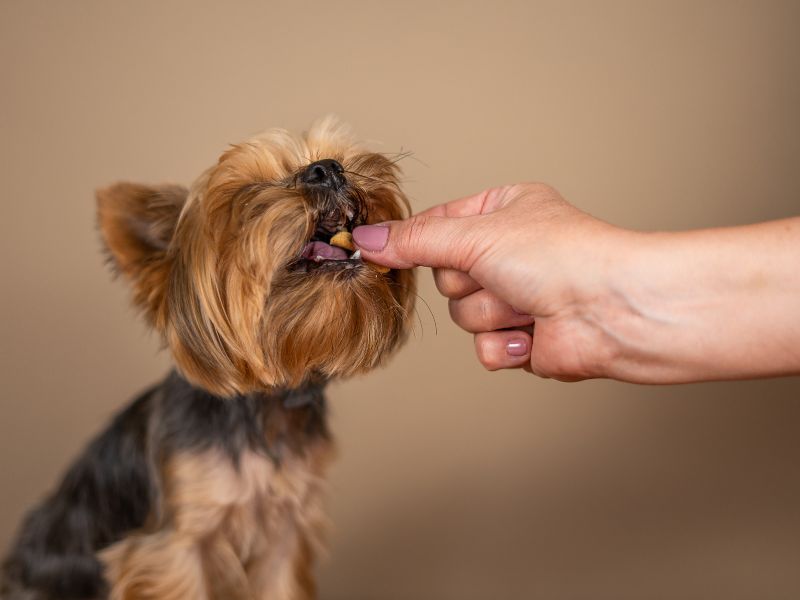Introduction
Are you looking for a way to show your furry friend some extra love and care? Look no further than homemade dog food recipes! By preparing your pup’s meals at home, you can ensure that they are getting the nutrition they need while also treating them to tasty and wholesome dishes.
In this article, we will share some delicious and easy-to-make recipes that will not only delight your dog’s taste buds but also provide them with the essential nutrients they require for a healthy and happy life. From hearty chicken and vegetable stew to mouthwatering salmon and sweet potato patties, these homemade dog food recipes are sure to make your pup’s tail wag with excitement.
So, put on your chef’s hat and let’s get cooking for your four-legged best friend!
Why Homemade Dog Food?
Feeding your dog homemade food has numerous benefits that go beyond just providing them with a tasty meal. Here are some reasons why homemade dog food is a great choice for your furry companion:
- Control over ingredients: By preparing your dog’s food at home, you have full control over the quality and source of ingredients. You can ensure that your dog is getting the freshest and healthiest ingredients, free from any harmful additives or preservatives.
- Tailored to specific dietary needs: Many dogs have specific dietary needs or restrictions, such as grain allergies or sensitivities to certain proteins. Homemade dog food allows you to customize your dog’s meals according to their individual needs, ensuring they get the right balance of nutrients.
- Improved digestion: Homemade dog food is generally easier for dogs to digest compared to commercial dog food, which often contains fillers and artificial ingredients. By providing your dog with wholesome and natural ingredients, you can promote better digestion and overall gut health.
- Enhanced overall health: A balanced homemade diet can contribute to your dog’s overall health and well-being. By providing them with the right nutrients in the right proportions, you can support their immune system, maintain a healthy weight, and improve their coat and skin condition.
Common Ingredients Used in Homemade Dog Food
When it comes to preparing homemade dog food, there are a wide variety of ingredients you can choose from. Here are some common ingredients that are often used in homemade dog food recipes:
- Protein sources: Chicken, turkey, beef, fish, and eggs are excellent sources of protein for dogs. Protein is essential for their muscle development, immune function, and overall growth.
- Vegetables: Carrots, peas, spinach, and sweet potatoes are packed with vitamins, minerals, and fiber. They provide essential nutrients and contribute to a well-rounded diet for your dog.
- Grains and carbohydrates: While some dogs may have grain allergies or sensitivities, others can benefit from grains like rice or oats, which provide energy and fiber. Other carbohydrate sources include quinoa, barley, and lentils.
- Healthy fats: Fats are important for your dog’s joint health, skin condition, and coat shine. Coconut oil, olive oil, and flaxseed oil are some healthy fat options for homemade dog food.
- Supplements: To ensure your dog gets all the necessary nutrients, you may need to add supplements like fish oil for omega-3 fatty acids, calcium for bone health, or probiotics for gut health. Consult with your veterinarian for appropriate supplements.

Nutritional Considerations for Homemade Dog Food
When preparing homemade dog food, it’s crucial to ensure that your dog receives a balanced and complete diet. Here are some important nutritional considerations to keep in mind:
- Protein: Dogs require a sufficient amount of protein in their diet. It should make up around 15-30% of their daily caloric intake. Be sure to include high-quality protein sources in their meals.
- Carbohydrates: Carbohydrates provide energy for your dog. They should make up around 30-70% of their daily caloric intake. Choose carbohydrates that are easily digestible and low in sugar.
- Fats: Fats are a concentrated source of energy for dogs. They should make up around 10-15% of their daily caloric intake. Include healthy fats in their meals, but be mindful of the overall calorie content.
- Vitamins and minerals: Dogs require a wide range of vitamins and minerals for optimal health. Ensure that their meals contain a variety of fruits, vegetables, and supplements to meet their nutritional needs.
- Water: Adequate hydration is essential for your dog’s overall health. Always provide fresh and clean water alongside their meals.
It’s important to consult with your veterinarian to determine the specific nutritional requirements of your dog based on their age, breed, size, and any underlying health conditions.
Homemade Dog Food Recipes for Different Dietary Needs
Grain-Free Recipe: Chicken and Vegetable Stew
Ingredients: – 2 boneless, skinless chicken breasts – 1 cup chopped carrots – 1 cup chopped green beans – 1 cup chopped zucchini – 1 cup peas – 4 cups low-sodium chicken broth – 1 tablespoon olive oil
Instructions: 1. In a large pot, heat the olive oil over medium heat. Add the chicken breasts and cook until browned on both sides. 2. Remove the chicken from the pot and set aside. Add the carrots, green beans, zucchini, and peas to the pot and sauté for a few minutes. 3. Return the chicken to the pot and pour in the chicken broth. Bring to a boil, then reduce the heat and simmer for about 20 minutes or until the chicken is cooked through and the vegetables are tender. 4. Remove the chicken from the pot and shred it using two forks. Return the shredded chicken to the pot and stir well. 5. Allow the stew to cool before serving it to your dog. Store any leftovers in an airtight container in the refrigerator.
Hypoallergenic Recipe: Salmon and Sweet Potato Patties
Ingredients: – 2 cans of wild-caught salmon – 2 cups cooked and mashed sweet potatoes – 1 cup cooked quinoa – 2 eggs – 1/4 cup chopped fresh parsley – 1 tablespoon coconut oil
Instructions: 1. In a large bowl, combine the salmon, mashed sweet potatoes, cooked quinoa, eggs, and chopped parsley. Mix well until all the ingredients are evenly combined. 2. Heat the coconut oil in a skillet over medium heat. Shape the mixture into patties and place them in the skillet. 3. Cook the patties for about 4-5 minutes on each side or until golden brown and cooked through. 4. Allow the patties to cool before serving them to your dog. Store any leftovers in an airtight container in the refrigerator.
Tips for Preparing Homemade Dog Food
When it comes to preparing homemade dog food, here are some tips to ensure you create nutritious and delicious meals for your pup:
- Consult with a veterinarian: Before making any dietary changes for your dog, consult with your veterinarian. They can provide guidance on your dog’s specific nutritional needs and any potential dietary restrictions.
- Balance and variety: Aim to create balanced meals that include a variety of proteins, vegetables, grains (if suitable), and healthy fats. This will ensure your dog receives a wide range of nutrients.
- Cooking methods: While some ingredients can be served raw, cooking certain foods can help improve their digestibility and nutrient availability for dogs. Be cautious of using excessive oil, salt, or seasoning.
- Portion control: Dogs have different caloric needs based on their age, size, activity level, and overall health. Be mindful of portion sizes to prevent overfeeding or underfeeding.
- Storage and safety: Store homemade dog food in airtight containers in the refrigerator for up to 3-5 days. If preparing large batches, consider freezing individual portions for later use. Always practice good hygiene when handling and preparing dog food.
How to Transition Your Dog to a Homemade Diet
Transitioning your dog from commercial dog food to a homemade diet should be done gradually to avoid any digestive upset. Here’s a simple transition plan:
- Week 1: Replace 25% of your dog’s current food with homemade food. Monitor your dog’s response and adjust as necessary.
- Week 2: Increase the homemade food to 50% and decrease the commercial food to 50%.
- Week 3: Increase the homemade food to 75% and decrease the commercial food to 25%.
- Week 4: Your dog should now be fully transitioned to the homemade diet. Monitor their health and adjust the recipes as needed.
During the transition, monitor your dog’s stool consistency, energy levels, and overall well-being. If you notice any adverse reactions, consult with your veterinarian.

See Also: Quick and Easy Home-Made Dog Treats!
And: How to Make Your Own Custom Dog Bed
Homemade Dog Treats Recipes
In addition to homemade meals, you can also spoil your furry friend with some tasty homemade dog treats. Here are a couple of simple recipes:
Peanut Butter Banana Bites
Ingredients: – 1 ripe banana, mashed – 1/2 cup natural peanut butter – 1 cup rolled oats
Instructions: 1. Preheat the oven to 350°F (175°C). 2. In a mixing bowl, combine the mashed banana, peanut butter, and rolled oats. Mix until well combined. 3. Roll the mixture into small bite-sized balls and place them on a baking sheet lined with parchment paper. 4. Bake for about 15 minutes or until the treats are golden brown. 5. Allow the treats to cool completely before serving them to your dog. Store any leftovers in an airtight container.
Apple Carrot Dental Chews
Ingredients: – 1 apple, grated – 1 carrot, grated – 1 cup oat flour
Instructions: 1. Preheat the oven to 350°F (175°C). 2. In a mixing bowl, combine the grated apple, grated carrot, and oat flour. Mix until a dough forms. 3. Roll out the dough on a floured surface to about 1/4 inch thickness. Use cookie cutters to cut out shapes or simply slice the dough into squares. 4. Place the shapes on a baking sheet lined with parchment paper. 5. Bake for about 20-25 minutes or until the treats are firm and slightly golden. 6. Allow the treats to cool completely before serving them to your dog. Store any leftovers in an airtight container.
Precautions and Safety Measures for Homemade Dog Food
While homemade dog food can be a wonderful option for your furry friend, there are some precautions and safety measures to keep in mind:
- Consult with a veterinarian: Ensure that you consult with your veterinarian to determine the appropriate diet for your dog based on their specific needs and any underlying health conditions.
- Avoid harmful ingredients: Some human foods are toxic to dogs, such as chocolate, onions, garlic, grapes, and raisins. Familiarize yourself with a list of foods that are hazardous to dogs and avoid including them in homemade recipes.
- Proper food handling: Practice good hygiene when handling and preparing dog food. Wash your hands thoroughly before and after handling raw ingredients and clean all utensils and surfaces to prevent cross-contamination.
- Balance and nutrition: Ensure that your dog’s homemade diet is nutritionally balanced and provides all the necessary nutrients. If unsure, consult with a veterinary nutritionist to formulate a balanced recipe.
- Quality of ingredients: Use high-quality ingredients, including fresh meats and vegetables. Avoid using ingredients that are spoiled, moldy, or past their expiration date.
Conclusion
Preparing homemade dog food is a rewarding way to provide your furry friend with nutritious and delicious meals. By following these homemade dog food recipes and nutritional considerations, you can ensure that your dog receives the care and love they deserve.
Remember to consult with your veterinarian to create a diet that is tailored to your dog’s specific needs. From grain-free chicken and vegetable stew to hypoallergenic salmon and sweet potato patties, these homemade dog food recipes will have your pup wagging their tail in delight.
So, don your chef’s hat and start cooking up some wholesome meals and treats for your four-legged best friend. They’ll thank you with endless love and loyalty!

